Góis
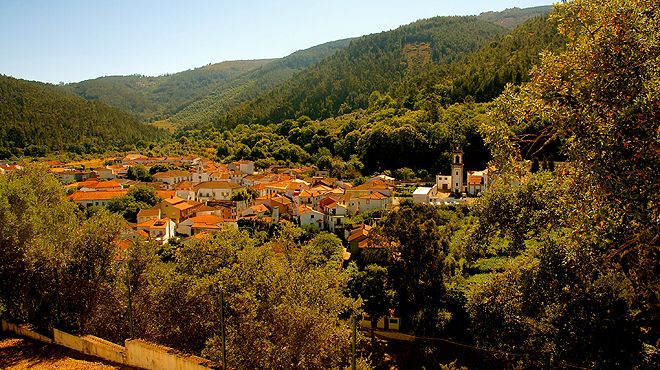
Towns and Villages
Nestled between the Lousã and Açor hill ranges, bathed by the river Ceira, lies the welcoming town of Góis. Heritage waiting to be discovered, river beaches, walkways along riverbanks, trails, and Schist Villages are some of the attractions of this municipality, where reinvigorating fresh air poses an invitation to enjoy nature.
Góis is very popular thanks to its river’s crystal-clear waters, which may be one of the contributors to the location having been inhabited since prehistoric times. The Pedra Letreira, a large slab of schist with engravings on its surface, is a remnant of the Bronze Age.
The town gained greater importance in the 16th century, during the reigns of King Manuel, who granted the town charter in 1516, and King João III, who had the Ponte Real bridge built here in 1533, a truly iconic construction that surprises all visitors to Góis.
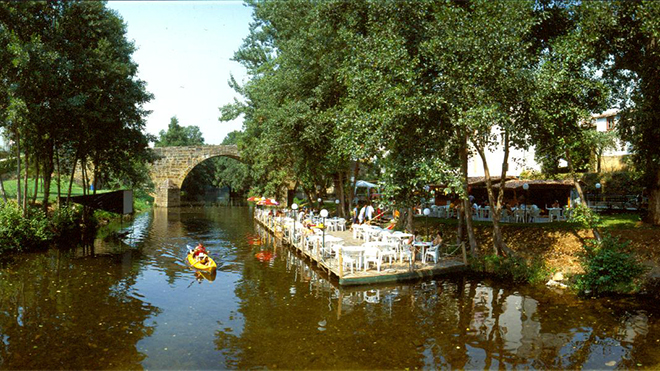
Ponte Real ©Turismo Centro de Portugal
Crossing the bridge will make you want to stroll along the river, the tree canopy overhead protecting you from the heat. From there, the riverside walkway is in sight, as is a bar with a floating terrace and river beach calling you in for a dip on warmer days. The river allowed for mills to be built to harness the power of its waters, structures that still stand on its banks to this day.
In the late 19th century, the construction of a paper mill played an important role in maintaining the town's population, in addition to the tin and tungsten in the region, which was mined in the mid- 20th century.
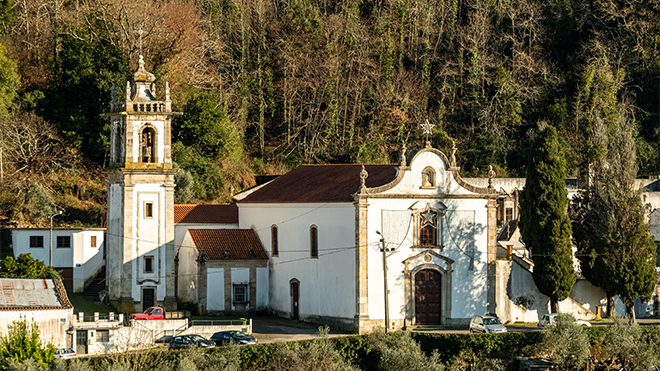
Igreja Matriz de Góis ©David Cachopo - Gerador
When approaching Góis from the west, before the bridge, you’ll see the small hexagonal Chapel of the Martyr Saint Sebastian, which has a baroque front entrance. In the historic centre, of particular note are the building that housed a Hospital founded in 1560, the Chapel of the Holy Spirit, which has been adapted into a Tourist Office, the Town Hall, located within a 17th-century manor house, and a 19th-century house out of which the former Havaneza Goiense trading house once operated. Very close by, you can visit the Góis Mother Church, which dates back to the 16th century and in which you can admire a fine example of Portuguese Renaissance sculpture: the tomb of Luis da Silveira, a nobleman who significantly contributed to the town's development in the 16th century.
Located at the viewpoint within the Castle gardens, the Góis swing is one of the best places to take pictures of the town, framed by the mountains and the river.
Don't forget to make the most of the refreshing Cerejal Picnic Area, a park on the banks of the Ceira, and the Peneda River Beach. Lovers of river beaches can also choose between the river beach in the village of Alvares or Canaveias, located in Vila Nova do Ceira. In this parish, the Cerro da Candosa walkways are an option from which to enjoy the landscape and the rocky river gorge known as Portas do Ceira, a natural treasure of the region that is also popular for extreme sports.
For those following the National Road 2 route from north to south of the country, Góis is halfway along, with the 300-kilometre marker located in the village of Alvares.
If travelling by car, you can take the Ceira Valley Route, starting from the historic centre and heading along the panoramic views of the M543 towards the village of Colmeal. The green curves of the valley will take you through Cabreira, where the iconic Lagar (grape treading vat) and natural pool stand out. This location was used as the film set for the film “Fatima”, directed by Fabrizio Costa in 1997. The route continues through the high-up villages of Carvalhal, Sapo, and Aldeia Velha, from which you can take in the landscape of the Açor hills. A short detour through the unspoiled village of Soito - at one of the highest points in the Serra - is a worthwhile stop.
Once at the top, keep going to the village of Cadafaz for views over the valley, then on to the village of Tarrastal. A descent to the village of Cabreira will then take you back to the town of Góis.

Penedos de Góis ©Paulo Magalhães
Next to the Schist Village of Pena are the imposing Penedos de Góis, which reach an altitude of 1,040 m at their highest point. This is a stunning location featuring unique slopes and waterfalls. A highlight is the "Penedo Abelha" (Bee Boulder), which was named by locals who saw a monster’s face in the rock. Several trails allow you to explore the beauty of the rock formations and their magnificent surroundings, providing varying degrees of difficulty.
A visit to the region would not be complete without taking the Góis Schist Villages route: Pena, Aigra Nova, Aigra Velha, and Comareira. These are incredibly peaceful locations, where only the chirping of birds and the sounds of herds grazing in the surrounding fields can be heard.
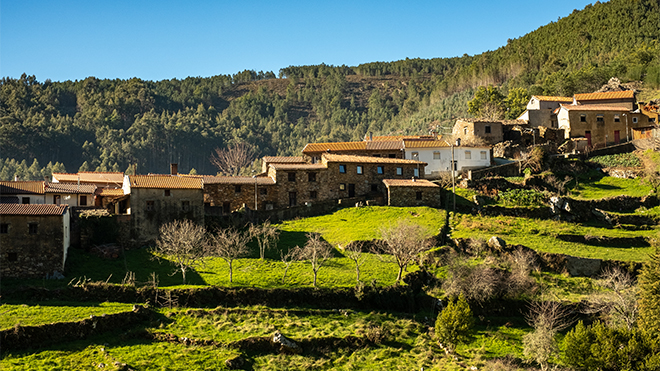
Aldeia do Xisto da Pena ©David Cachopo - Gerador
As for festivities, it's worth highlighting the traditional Carnival festivities in the villages, where revellers dress up in masks made of cork, hessian fabric, and old rags, as well as the festivities in honour of the patron saint, Our Lady of the Assumption, held on the 15th August.
During your trip, don't forget to enjoy the regional flavours: ham soup, Tibornada (cod with potatoes and cabbage, drizzled with olive oil), Ceira-style trout (marinated for 8 days in olive oil, vinegar, garlic, onion and bay leaf), Sinhel kid and the traditional Bucho (rice and pork meat cooked inside a pig's stomach). Gamelinhas, small honey, chestnut, walnut, and cinnamon pies, are a popular dessert.


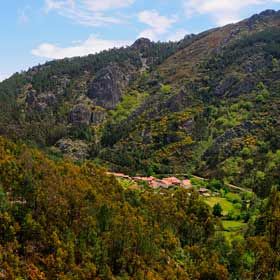



 Explore
Explore 
 Remember and Share
Remember and Share 


